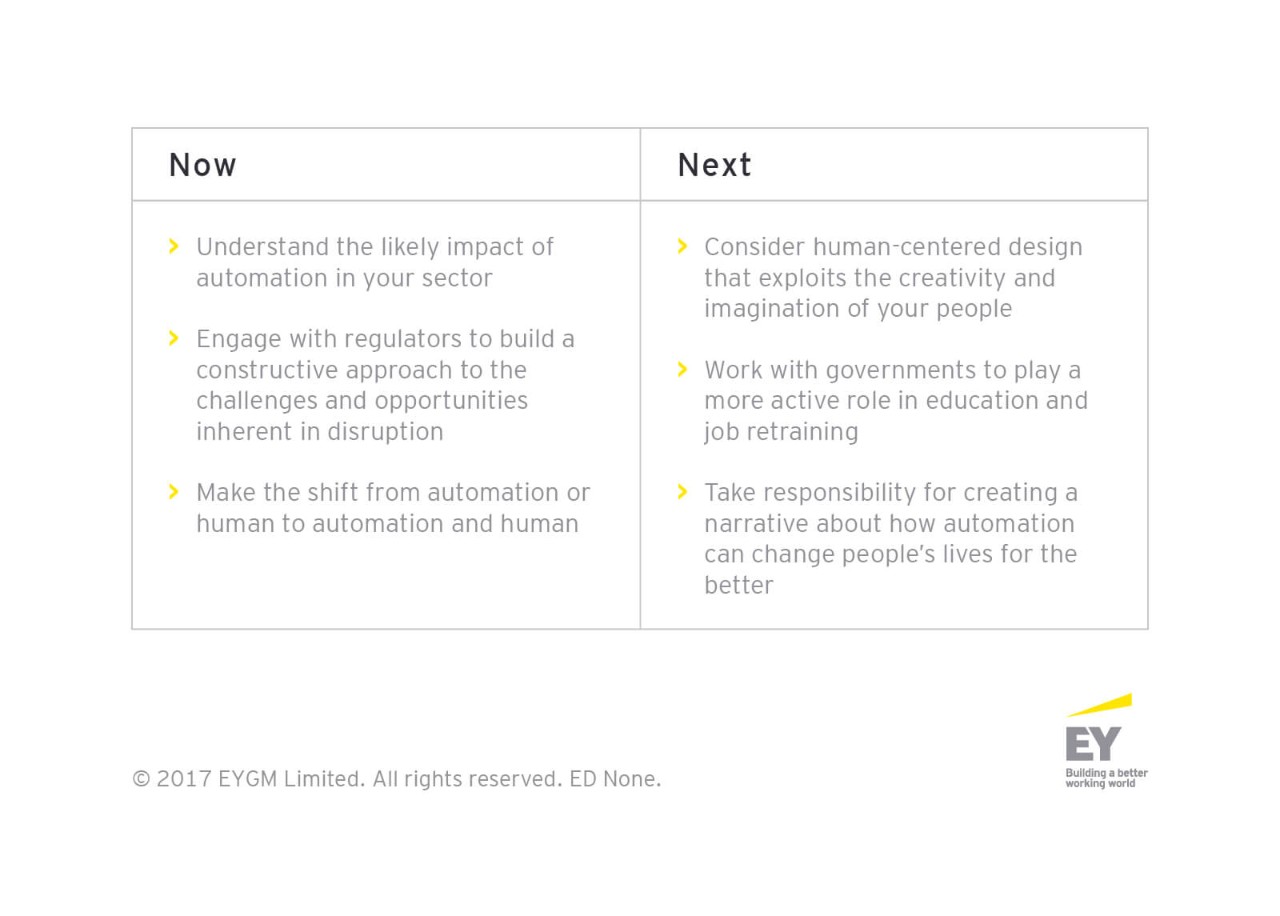Governments are challenged to address escalating citizen needs
Governments are considering how to respond to the potential social consequences of automation. As Jeff Wong, EY Global Chief Innovation Officer, pointed out at Innovation Realized 17, regulators are seeking to understand and embrace change and to figure out how to reinvent themselves in the face of digital disruption.
Indeed, regulators have been challenged to respond by numerous developments in recent years. Gig economy platforms, such as Uber and Airbnb, have tested existing regulations in areas ranging from hotel safety to taxicab licensing to overtime pay. The disruptions now looming on the horizon — blockchain contracts, driverless cars, medical algorithms and more — will strain regulatory paradigms further.
Jacobstein argues that regulation should only be one of many tools in the government’s toolbox. Governments will also need to consider policy changes, such as a universal basic income — something already being piloted in some countries around the world, including Kenya, Finland, Utrecht, the Netherlands, Oakland California, and Ontario, Canada are experimenting with some form of basic universal income — as well as free education and job retraining for displaced workers. Jacobstein also argues that increased taxation and some redistribution of the vast increase in wealth generated by automation will help improve the quality of people’s lives.
Organizations need to make the shift from “automation or human” to “automation and human”
Regulation and policymaking, of course, are two pieces of the puzzle — maintaining a level playing field and protecting the quality of lives of displaced workers. However, they cannot go it alone. Increasingly, voices in the business community will have to rise up and ask: “How can I, as a responsible organization, drive inclusive growth?”
One option will involve working closely with governments and regulators. As Vanessa Colella, Head of Citi Ventures and Chief Innovation Officer at Citi, points out, “the opportunity for business in working with control functions is not going from ‘no’ to ‘yes,’ but rather getting from ‘no’ to ‘how.’” In other words, this isn’t about viewing control functions as opponents from whom companies want only one thing (an approval), but rather as partners with whom to build a more sustainable and relevant approach and mindset.
Within their own organizations, leaders will want to consider changes to internal policies, such as the length of the average work week or the number of days in a work week. Further, organizations need to create a culture shift from “automation or human” to “automation and human.” The evolution of digital technology should not always be about replacing humans, but about potential partnerships in which humans and automation work collaboratively toward a common goal. As Dr. Jeff Welser, Vice President and Lab Director at IBM Research – Almaden suggests, “fears of job losses have to be seen in context. People should think about AI augmenting the human ability, not about AI replacing jobs.”



